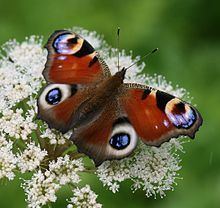Scientific name Nymphalini Order Butterflies and moths | Superfamily Papilionoidea Subfamily Nymphalinae Rank Tribe | |
 | ||
Lower classifications | ||
Vanessa braziliensis borboleta bela dama painted lady butterfly nymphalini
Nymphalini is a tribe of nymphalid brush-footed butterflies. Common names include admirals, anglewings, commas, and tortoiseshells, but none of these is specific to one particular genus.
Contents
The name Anglewing butterflies is an English translation of a Latin term Papiliones Angulati, [Denis & Schiffermüller], ([1775, 1776]). Based on an overall similarity in the angulate wing shape, a collective name: Papiliones angulati was employed for Papilio atalanta, P. antiopa, P. cardui, P. c-album, P. io, P. polychloros, P. urticae, P. xanthomelas, P. vaualbum, P. levana and P. prorsa. The meaning of the term Papiliones Angulati [as a collective taxon name: Code, Article 42.3.1 ] is re-defined to apply only to a monophyletic clade, i.e. Nymphalis sensu lato. Specifically excluded are Papilio atalanta [→ Vanessa], P. cardui [→ Cynthia], P. levana, P. prorsa [→ Araschnia].
This monophyletic group of nymphaline butterflies inhabiting northern hemisphere are characterized by a jagged outline of their wings and the ability to survive the winter months as adults in an obligatory hibernal diapause, hiding in various shelters (e.g., crevices, hollows, cavities, even unheated buildings). The signature mark of all butterflies is the cryptic colour and maculation of the ventral (under) side of their wings, serving to conceal the hibernating butterfly against the substrate on which it rests.
Genera
Listed alphabetically.
The monotypic genus Tigridia is sometimes placed here as a very basal offshoot close to Colobura, sometimes in the related tribe Coeini.
Prehistoric genera only known from fossils are:
